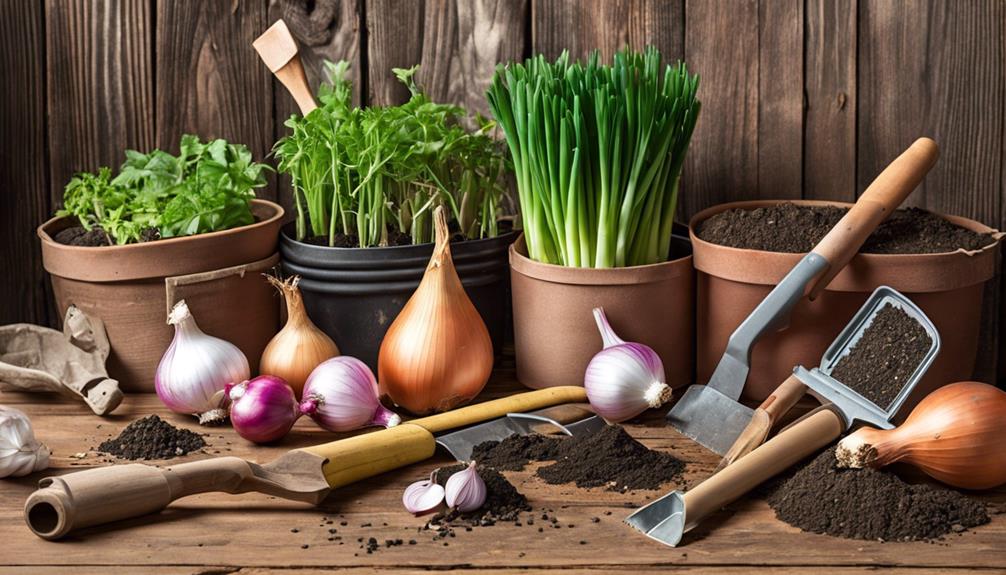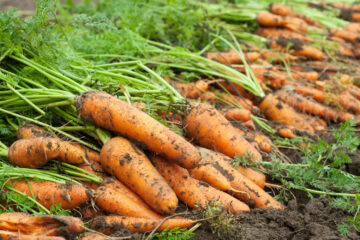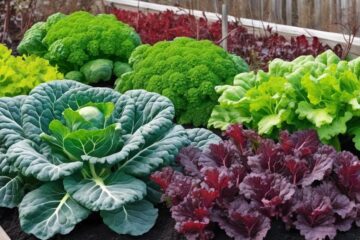When it comes to planting seasons for onions and other crops, you might feel like a fish out of water with the plethora of information available. However, fear not, as this guide will help you navigate the world of onion cultivation with ease.
From selecting the perfect variety to mastering soil preparation techniques, each step is crucial in ensuring a fruitful harvest. But what about the lesser-known tips and tricks that can truly elevate your onion-growing game?
Stay tuned to uncover these secrets and take your planting skills to the next level.
Onion Planting Season Overview
If you want a successful onion harvest, plant them in early spring when the soil temperature reaches around 50°F. Understanding the ideal planting season for onions is crucial for their growth and development. By planting onions at the correct season, you set the stage for a successful harvest.
Knowing the planting season for onions is essential for planning and managing your garden effectively. This ensures that your onions have the best start and can thrive throughout the season.
Paying attention to the soil temperature and timing your onion planting accordingly can make a significant difference in the outcome of your crop. So, make sure to plant your onions at the right time for a fruitful harvest.
Choosing the Right Onion Variety
When selecting the right onion variety for your region, consider the length of daylight hours to ensure optimal growth and yield. Choose short-day onion varieties if you're in a southern region with 10-12 hours of daylight for best results.
Opt for intermediate-day onion varieties in central regions where there are 12-14 hours of daylight, promoting proper bulb formation. For those in northern regions with 14-16 hours of daylight, long-day onion varieties are the way to go for successful production.
Alternatively, day-neutral onion varieties offer adaptability to various latitudes, providing flexibility in planting and harvesting. Matching the onion type to your region's latitude is crucial to maximize growth potential and yield.
Soil Preparation for Onions
To prepare the soil for onions, start by incorporating aged compost or organic matter to boost fertility and promote healthy growth. Here's what you need to do:
- Ensure good drainage in the soil to prevent waterlogging, which can cause rotting of the onion roots.
- Maintain the soil pH between 6.0 to 6.8 for optimal onion growth.
- Keep the soil loose and well-aerated to facilitate root development and allow the bulbs to expand easily.
Remember to mulch the soil around the onions to retain moisture and regulate soil temperature. Avoid compacted soil, as it can impede onion growth and result in undersized bulbs. Proper soil preparation sets the stage for successful onion cultivation.
Planting and Caring for Onions
After preparing the soil adequately for onions, proceed to plant and care for them following these essential steps.
Plant onions using onion sets in early spring when the soil temperature hits 50°F for optimal growth. Space the onion bulbs 3-4 inches apart in rows 12-18 inches apart to allow for proper bulb development.
Ensure consistent moisture by providing about 1 inch of water per week, but be cautious as onions don't require excessive watering. Fertilize the onions with a balanced fertilizer high in phosphorus to promote bulb growth, remembering to stop fertilizing once bulbs begin forming.
Once harvested, store the onions in a cool, dry, and well-ventilated area to prolong their shelf life for several months. Master these steps for successful onion cultivation in this beginner's guide.
Harvesting and Storing Onions
For successful harvesting and storage of onions, ensure that the tops have turned yellow and fallen over, indicating maturity. Once ready, follow these steps to properly harvest and store your onions:
- Harvest Carefully: Gently lift the onions from the soil to avoid damaging the bulbs.
- Cure Properly: Allow the harvested onions to cure in a dry, well-ventilated area for 2-3 weeks to toughen the skin and improve storage capability.
- Store Correctly: Trim the roots and tops of the cured onions before storing them in a cool, dry place with good air circulation. This will help prolong the shelf life of your onions.
Frequently Asked Questions
What Season Should I Plant Onions?
You should plant onions in early spring when the soil temperature hits around 50°F. This timing ensures optimal growth and bulb development. The cool weather helps with root establishment, and maturing before summer heat promotes bulb formation.
How Do You Plant Onions for Beginners?
Plant onions by setting them 1 inch deep, root down, tip up, and 4-6 inches apart. Water weekly, adjust for weather, and ensure full sun exposure. Mulch between plants. Use loose, fertile soil to support optimal growth.
What Is the Pattern for Planting Onions?
To plant onions, dig shallow holes 1/4-1/2 inch deep, spacing them 3-4 inches apart in rows 12-18 inches apart. Water consistently, providing about 1 inch per week. Choose well-drained, sunny, fertile soil. With proper care, your onions will grow into healthy bulbs.
How Late in the Season Can You Plant Onions?
You can plant onions late in the season before the last frost date, but be mindful of smaller bulbs due to limited growth time. While they might not fully mature, you can still harvest them as green onions.
Conclusion
Congratulations on completing the beginner's guide to planting seasons for onions!
You've learned all the ins and outs of growing these flavorful bulbs, from choosing the right variety to harvesting and storing them.
Now, get ready to put your newfound knowledge to the test and watch your onion garden flourish. Remember, even though onions make you cry, growing them doesn't have to be a tearful experience – happy planting!





